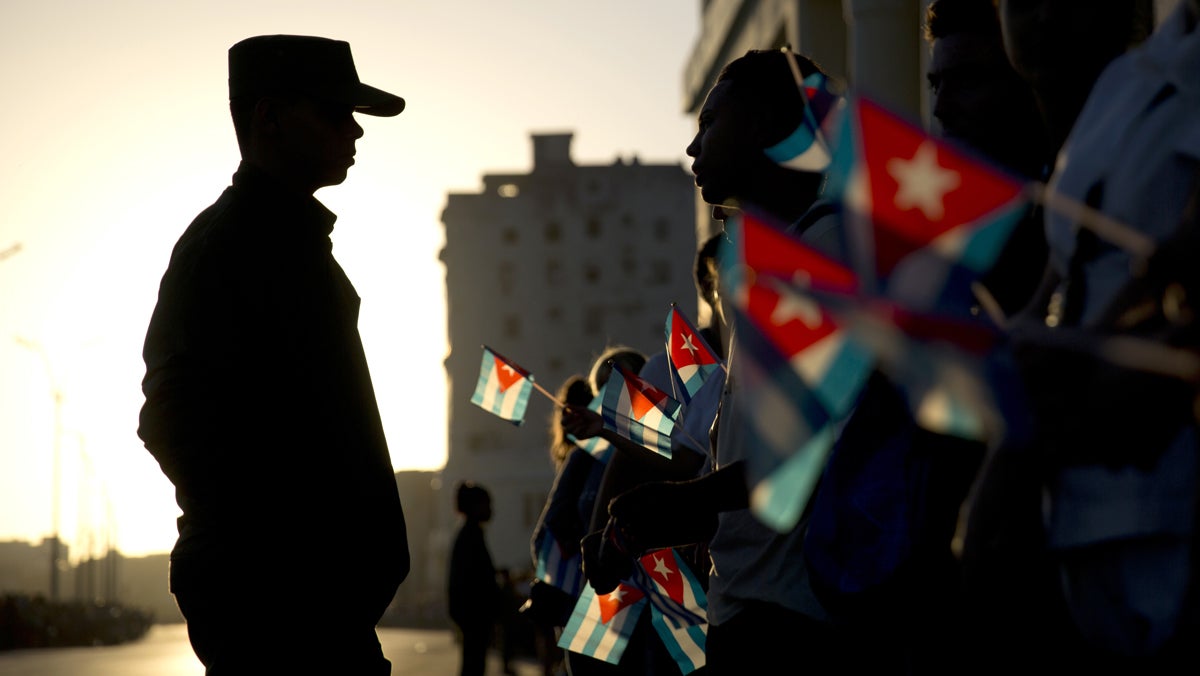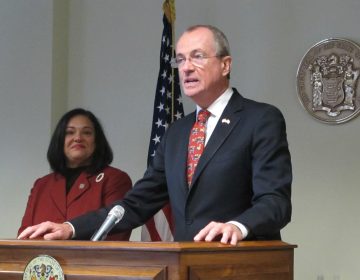Fidel Castro and my mentor in exile

A soldier is silhouetted against the early morning sky as people holding Cuban flags wait for the motorcade transporting the remains of Cuban leader Fidel Castro in Havana, Cuba, Wednesday, Nov. 30, 2016. Castro's ashes have begun a four-day journey across Cuba from Havana to their final resting place in the eastern city of Santiago. (AP Photo/Natacha Pisarenko)
They say the good die young. The death of Fidel Castro at age 90 does not disprove this adage.
My college mentor was a charming Spanish professor with a wry sense of humor. I knew he was Cuban, an acclaimed novelist, and a former practicing attorney and journalist. But I knew little of his personal life.
It would be years before I learned my professor’s “back story.” Ricardo was not just a Cuban immigrant; he was in exile.
Like many Cubans of his generation, my late professor rejoiced when Castro overthrew Batista. After all, Ricardo had been Castro’s schoolmate. An urbane, brilliant lawyer, Ricardo welcomed Fidel’s call to enter the diplomatic service as a representative of Cuba’s revolutionary government. But shortly after Castro came to power, Ricardo watched in horror as his friend became worse than Batista. Castro’s opponents soon met the firing squad.
Freedoms of the press, speech, religion, assembly — Castro suspended them all. So Ricardo used his formidable skills as an attorney to rescue the growing number of Castro’s powerless political prisoners. But soon, his own life was in peril. While traveling to England to represent Cuba at the Court of St. James, Ricardo and his wife bravely renounced their Cuban citizenship. They found their way to America, where Ricardo began yet another career as a professor. Slowly I learned that this kind, self-effacing gentleman had a painful past deeply interwoven with some of the most significant political events of the 20th century.
So now that Castro is dead, I am not surprised to see countless Cuban Americans dancing in the streets. And though the party line is that Cuba is in mourning, the reality is that Cubans must mourn — or else.
It’s not complicated
How foolish Barack Obama sounded when he stated that history will judge Fidel Castro. History? How about the last 50 years? I don’t think the wackiest revisionist historian in the world could make Castro look good.
But what about the vast growth in literacy under Castro? That’s great — but literacy is pretty useless without freedom of the press. What, exactly, has Castro allowed his people to read? Certainly not the “New York Times” or the “Wall Street Journal.” Or even this Internet site.
What about Castro’s much vaunted health care system? If it’s so great, you’d think that, since Obama normalized relations with Cuba, we’d be flocking to Havana for medical care. Instead, Cuban doctors are flocking to the United States to practice medicine. That’s because the Castro’s pay them peanuts to provide that supposedly world class health care.
As we enter the holiday season, let’s also remember that, from 1969 to 1998, it was illegal to celebrate Christmas in Castro’s Cuba. Talk about a War on Christmas.
Political consultant Alex Castellanos is one of many Cuban-Americans to speak out about his youth in Cuba. On MSNBC’s “Morning Joe,” he recalled a teacher who gave his elementary school class a picture to color. It was a picture of brave Cuban soldiers bayoneting evil American soldiers. Another teacher asked the children to close their eyes and pray for ice cream. When they opened their eyes, there was none; God had not answered their prayers. Then the teacher told them to close their eyes and ask Fidel for ice cream. When they opened their eyes, the ice cream had magically appeared.
In the same segment, Cuban-American journalist and filmmaker Soledad O’Brien, described her family’s fear each election day. Starting early in the morning, a neighbor would knock on their door. “Have you voted yet, Comrades?” he would ask. These “neighborly” visits would continue all day long, until finally, her family would vote, terrified of the political repercussions of staying home. Of course, there was no one to vote for but Fidel. This oppression drove untold numbers of Cubans to leave by any means necessary. Many dragged their kitchen tables to the ocean — and tried to escape by floating on them for a perilous 90-miles to the safety of America’s shores.
The ‘Stalin of the Caribbean’
Since President Obama normalized relations with Cuba — while seeking no human rights for Cubans in return — many Americans have visited Cuba through People to People. This popular “educational” program offers a complete whitewash of Cubans’ daily life. Visitors may not wander off the official itinerary to speak to everyday Cubans. There is no interaction, for example, with the Ladies in White, those stalwart women who protest each week against the imprisonment of their sons and husbands without charges. These trips are the equivalent of going to Disney World, chatting with Mickey Mouse, and thinking you know America.
To many Cubans, Fidel Castro was the “Stalin of the Caribbean.” He used the U.S. embargo to excuse the failures of his totalitarian state. May Fidel’s passing be a significant step toward the liberation of his “island prison,” and the beginning of democracy for the long-suffering Cuban people. My old mentor, Ricardo, would want nothing less.
WHYY is your source for fact-based, in-depth journalism and information. As a nonprofit organization, we rely on financial support from readers like you. Please give today.



